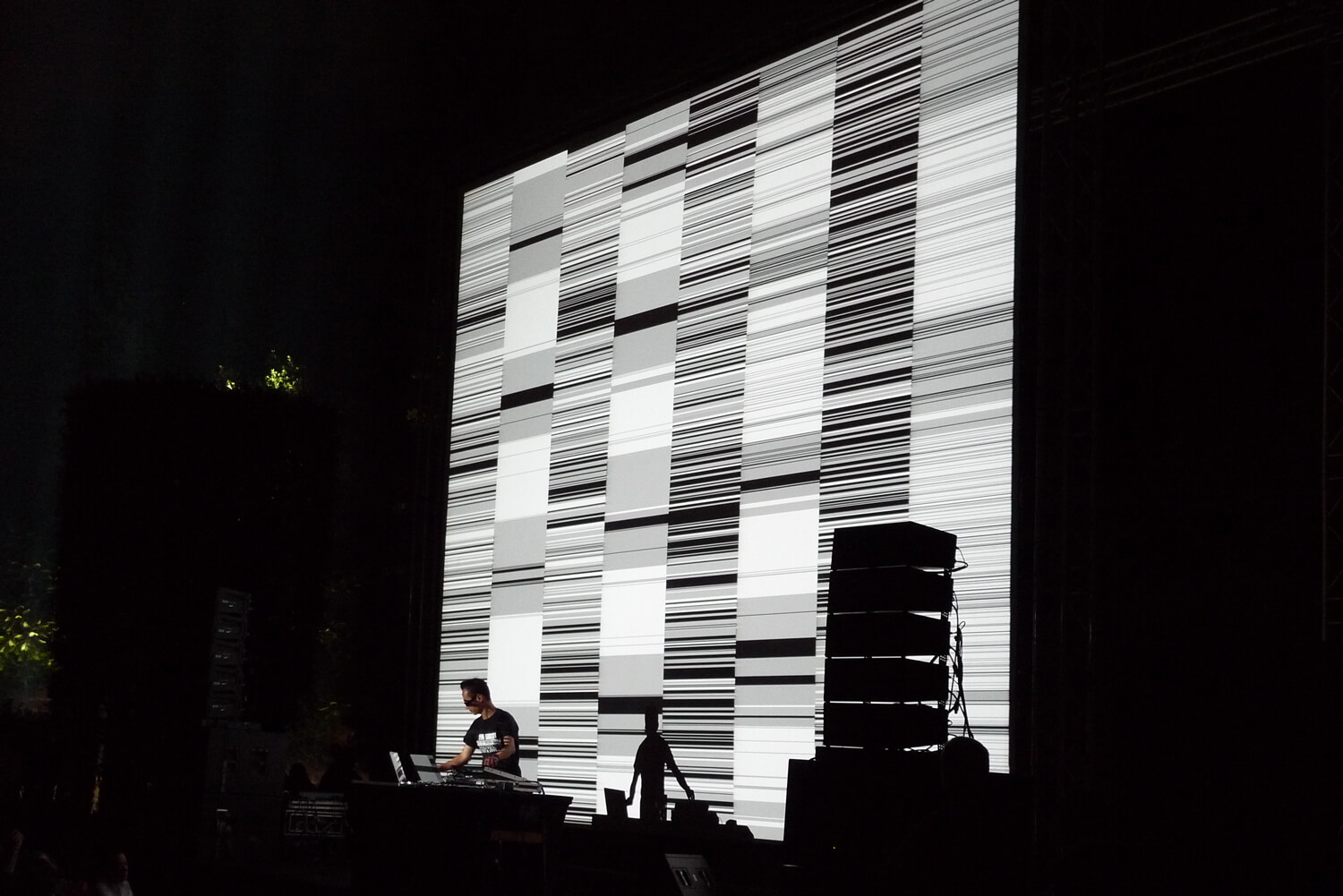The Sound of Ryoji Ikeda Knows No Borders
This sound artist creates immersive shows in which electronic music and images are designed to work hand in hand.

By bonus1up — Flickr, CC BY 2.0
Regarded as the founding father of contemporary art fused with techno and IDM (Intelligent Dance Music), Ryoji Ikeda began his career as a DJ in 1990. He gradually began to undertake various projects in sound art, a subtle blend of plastic arts and music, and became involved with Dumb Type, an interdisciplinary collective, taking the role of composer and collaborating in the creation of shows.
From composition to stage performances
In 1995, Ryoji Ikeda released his first album, 1000 Fragments. This album marked the start of his tours across Europe, the US, and Japan. Through immersive shows, highly visual stage performances, and minimalist concerts, the artist quickly rose to fame. During his shows, he would tend to remain stoic, black sunglasses perched on the end of his nose, standing in front of his computer—an attitude that became his hallmark. Since then, Ryoji Ikeda has continued to be a hot topic, particularly thanks to an exhibition held in London in 2021 that combined data, sound, and animated images.
More information on Ryoji Ikeda’s work can be found on his website.
TRENDING
-
The Tattoos that Marked the Criminals of the Edo Period
Traditional tattoos were strong signifiers; murderers had head tattoos, while theft might result in an arm tattoo.

-
Paris, Tokyo: Robert Compagnon
With his co-chef and talented wife, Jessica Yang, Robert Compagnon opened one of the top new restaurants in Paris: Le Rigmarole.
 3:31
3:31 -
Chiharu Shiota, Red Threads of the Soul
Last year, more than 660,000 people visited the retrospective 'Chiharu Shiota: The Soul Trembles' exhibit at the Mori Art Museum.

-
‘Before Doubting Others, Doubt Yourself. Who Can Truly Say a Dish Isn’t What It Used to Be?’
In ‘A Non-Conformist’s Guide to Surviving Society’, author Satoshi Ogawa shares his strategies for navigating everyday life.

-
The Story of Sada Yacco, the Geisha who Bewitched Europe
Described by Dazed magazine as the first beauty influencer, she has been restored to her former glory since 2019.





